Quickstart: Add chat with UI Library
Get started with Azure Communication Services UI Library to quickly integrate communication experiences into your applications. In this quickstart, learn how to integrate UI Library chat composites into an application and set up the experience for your app users.
Communication Services UI Library renders a full chat experience right in your application. It takes care of connecting to Azure Communication Services chat services, and updates participant's presence automatically. As a developer, you need to worry about where in your app's user experience you want the chat experience to launch and only create the Azure Communication Services resources as required.
Note
For detailed documentation and quickstarts about the Web UI Library visit the Web UI Library Storybook.
Prerequisites
- An Azure account with an active subscription. Create an account for free.
- A deployed Communication Services resource. Create a Communication Services resource.
- Azure Communication Services Token. See example
You can access the following quickstarts
Important
This feature of Azure Communication Services is currently in preview.
Preview APIs and SDKs are provided without a service-level agreement. We recommend that you don't use them for production workloads. Some features might not be supported, or they might have constrained capabilities.
For more information, review Supplemental Terms of Use for Microsoft Azure Previews.
Get the sample Android application for this quickstart in the open source Azure Communication Services UI Library for Android.
Prerequisites
- An Azure account and an active Azure subscription. Create an account for free.
- An OS running Android Studio.
- A deployed Azure Communication Services resource, note the endpoint URL.
- An Azure Communication Services access token and user identifier.
- An Azure Communication Services chat thread with above user added to it.
Set up the project
Complete the following sections to set up the quickstart project.
Create a new Android project
In Android Studio, create a new project:
In the File menu, select New > New Project.
In New Project, select the Empty Activity project template.
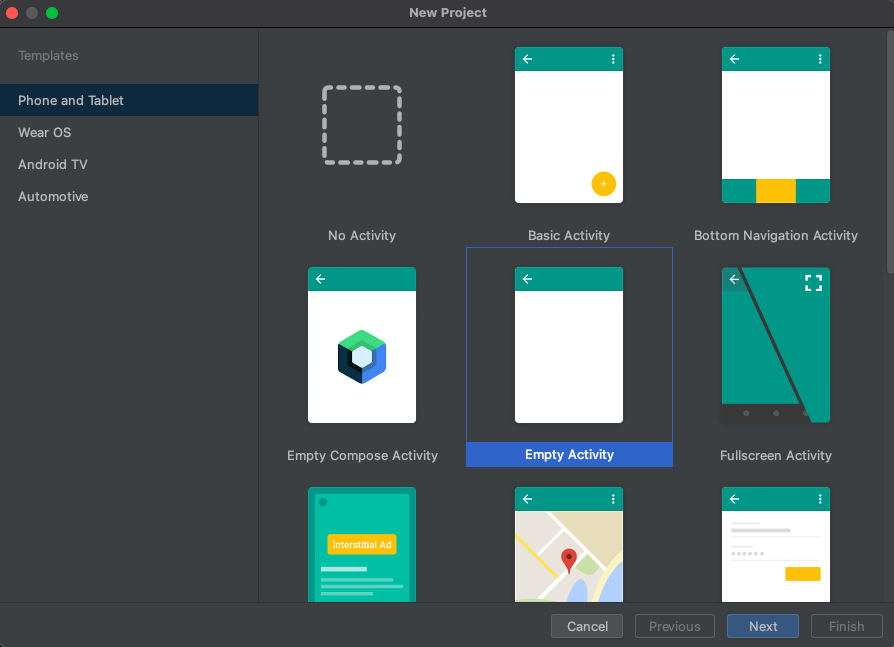
Select Next.
In Empty Activity, name the project UILibraryQuickStart. For language, select Java/Kotlin. For the minimum SDK, select API 23: Android 6.0 (Marshmallow) or later.
Select Finish.
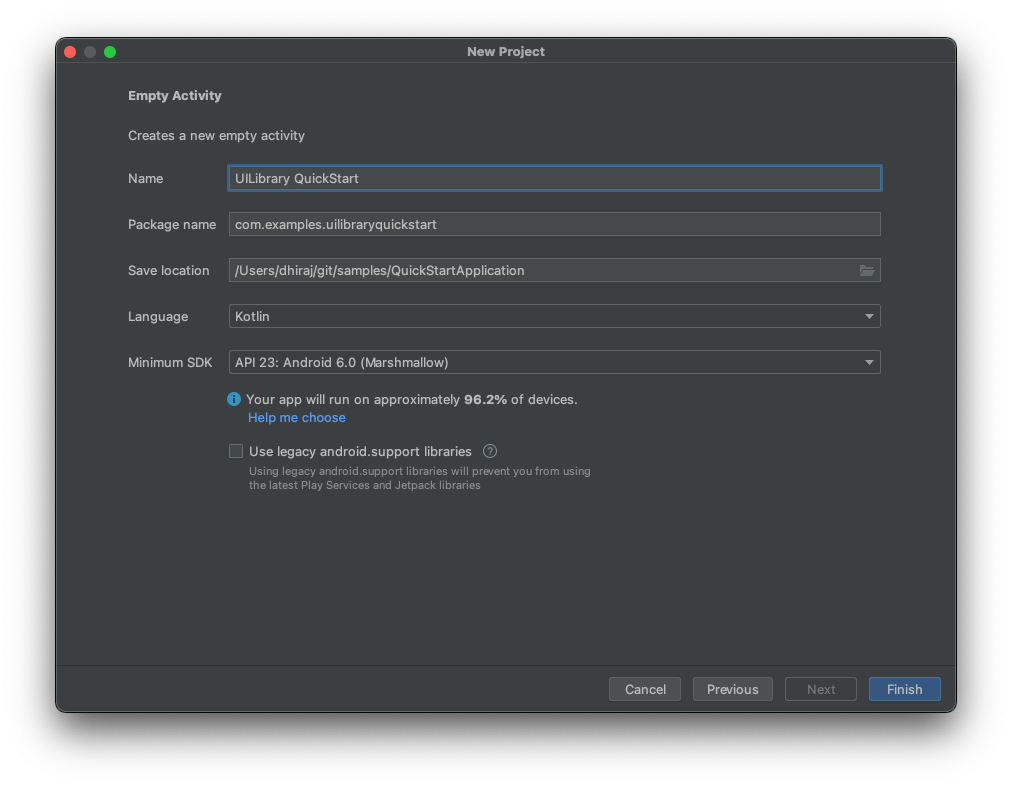
Install the packages
Complete the following sections to install the required application packages.
Add a dependency
In your app-level UILibraryQuickStart/app/build.gradle file (in the app folder), add the following dependency:
dependencies {
...
implementation 'com.azure.android:azure-communication-ui-chat:+'
...
}
Add Maven repositories
The Azure package repository is required to integrate the library:
To add the repository:
In your project Gradle scripts, ensure that the following repositories are added. For Android Studio (2020.*),
repositoriesis insettings.gradle, underdependencyResolutionManagement(Gradle version 6.8 or greater). For earlier versions of Android Studio (4.*),repositoriesis in the project-levelbuild.gradle, underallprojects{}.// dependencyResolutionManagement repositories { ... maven { url "https://pkgs.dev.azure.com/MicrosoftDeviceSDK/DuoSDK-Public/_packaging/Duo-SDK-Feed/maven/v1" } ... }Sync your project with the Gradle files. To sync the project, on the File menu, select Sync Project With Gradle Files.
Add a button to activity_main.xml
In the app/src/main/res/layout/activity_main.xml layout file, add the following code to create a button to start the composite:
<?xml version="1.0" encoding="utf-8"?>
<androidx.constraintlayout.widget.ConstraintLayout xmlns:android="http://schemas.android.com/apk/res/android"
xmlns:app="http://schemas.android.com/apk/res-auto"
xmlns:tools="http://schemas.android.com/tools"
android:layout_width="match_parent"
android:layout_height="match_parent"
tools:context=".MainActivity">
<Button
android:id="@+id/startButton"
android:layout_width="wrap_content"
android:layout_height="wrap_content"
android:text="Launch"
app:layout_constraintBottom_toBottomOf="parent"
app:layout_constraintLeft_toLeftOf="parent"
app:layout_constraintRight_toRightOf="parent"
app:layout_constraintTop_toTopOf="parent" />
</androidx.constraintlayout.widget.ConstraintLayout>
Initialize the composite
To initialize the composite:
Go to
MainActivity.Add the following code to initialize your composite components for calling. Replace the string values for properties (kotlin) or functions (java) for
endpoint,acsIdentity,displayName,accessTokenandThreadId. Replaceendpointwith the URL for your resource as provided by Azure Communication Services. ReplaceacsIdentityandaccessTokenwith the values provided by Azure Communication Services when you created the access token and use a relevant displayName. ReplaceThreadIdwith the value returned when you created the thread. Remember to add the user to the thread via REST API call, or the az command line interface client before you try to run the quick start sample or the client will be denied access to join the thread.
package com.example.uilibraryquickstart
import android.os.Bundle
import android.view.View
import android.view.ViewGroup
import android.widget.Button
import androidx.appcompat.app.AlertDialog
import androidx.appcompat.app.AppCompatActivity
import com.azure.android.communication.common.CommunicationTokenCredential
import com.azure.android.communication.common.CommunicationTokenRefreshOptions
import com.azure.android.communication.common.CommunicationUserIdentifier
import com.azure.android.communication.ui.chat.ChatAdapter
import com.azure.android.communication.ui.chat.ChatAdapterBuilder
import com.azure.android.communication.ui.chat.presentation.ChatThreadView
class MainActivity : AppCompatActivity() {
private lateinit var chatAdapter: ChatAdapter
override fun onCreate(savedInstanceState: Bundle?) {
super.onCreate(savedInstanceState)
setContentView(R.layout.activity_main)
val startButton = findViewById<Button>(R.id.startButton)
startButton.setOnClickListener { l: View? ->
val communicationTokenRefreshOptions =
CommunicationTokenRefreshOptions(
{ accessToken }, true
)
val communicationTokenCredential =
CommunicationTokenCredential(communicationTokenRefreshOptions)
chatAdapter = ChatAdapterBuilder()
.endpoint(endpoint)
.credential(communicationTokenCredential)
.identity(CommunicationUserIdentifier(acsIdentity))
.displayName(displayName)
.threadId(threadId)
.build()
try {
chatAdapter.connect(this@MainActivity).get()
val chatView: View = ChatThreadView(this@MainActivity, chatAdapter)
addContentView(
chatView,
ViewGroup.LayoutParams(
ViewGroup.LayoutParams.MATCH_PARENT,
ViewGroup.LayoutParams.MATCH_PARENT
)
)
} catch (e: Exception) {
var messageCause: String? = "Unknown error"
if (e.cause != null && e.cause!!.message != null) {
messageCause = e.cause!!.message
}
showAlert(messageCause)
}
}
}
/**
*
* @return String endpoint URL from Azure Communication Services Admin UI, "https://example.domain.com/"
*/
private val endpoint: String?
get() = "https://example.domain.com/"
/**
*
* @return String identity of the user joining the chat
* Looks like "8:acs:a6aada1f-0b1e-47ac-866a-91aae00a1c01_00000015-45ee-bad7-0ea8-923e0d008a89"
*/
private val acsIdentity: String?
get() = ""
/**
*
* @return String display name of the user joining the chat
*/
private val displayName: String?
get() = ""
/**
*
* @return String secure Azure Communication Services access token for the current user
*/
private val accessToken: String?
get() = ""
/**
*
* @return String id of Azure Communication Services chat thread to join
* Looks like "19:AVNnEll25N4KoNtKolnUAhAMu8ntI_Ra03saj0Za0r01@thread.v2"
*/
private val threadId: String?
get() = ""
fun showAlert(message: String?) {
runOnUiThread {
AlertDialog.Builder(this@MainActivity)
.setMessage(message)
.setTitle("Alert")
.setPositiveButton(
"OK"
) { _, i -> }
.show()
}
}
}
Run the code
In Android Studio, build and start the application:
- Select Start Experience.
- The chat client will join the chat thread and you can start typing and sending messages
- If the client is not able to join the thread, and you see chatJoin failed errors, verify that your user's access token is valid and that the user has been added to the chat thread by REST API call, or by using the
azcommand line interface.
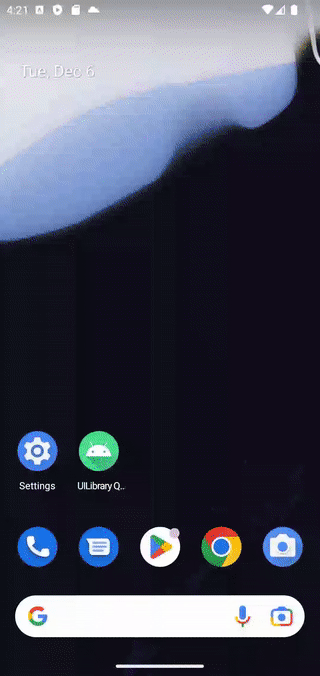
Important
This feature of Azure Communication Services is currently in preview.
Preview APIs and SDKs are provided without a service-level agreement. We recommend that you don't use them for production workloads. Some features might not be supported, or they might have constrained capabilities.
For more information, review Supplemental Terms of Use for Microsoft Azure Previews.
Get the sample iOS application for this quickstart in the open source Azure Communication Services UI Library for iOS.
Prerequisites
- An Azure account and an active Azure subscription. Create an account for free.
- A Mac running Xcode 13 or later and a valid developer certificate installed in your keychain. CocoaPods must also be installed to fetch dependencies.
- A deployed Azure Communication Services resource, note the endpoint URL.
- An Azure Communication Services access token and user identifier.
- An Azure Communication Services chat thread and now add the user you created in the last step to this chat thread.
Set up the project
Complete the following sections to set up the quickstart project.
Create a new Xcode project
In Xcode, create a new project:
In the File menu, select New > Project.
In Choose a template for your new project, select the iOS platform and select the App application template. The quickstart uses the UIKit storyboards.
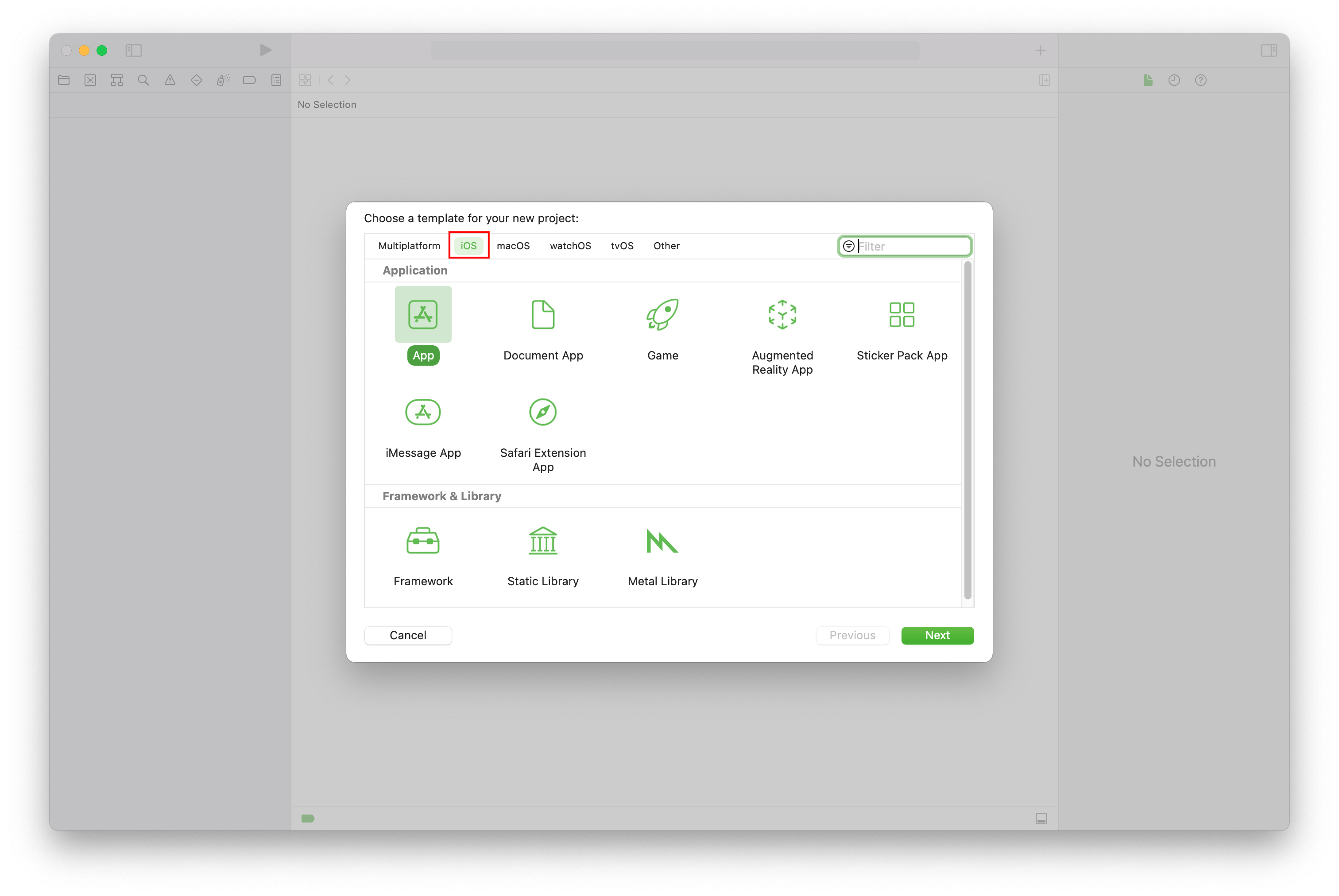
In Choose options for your new project, for the product name, enter UILibraryQuickStart. For the interface, select Storyboard. The quickstart doesn't create tests, so you can clear the Include Tests checkbox.

Install the package and dependencies
(Optional) For MacBook with M1, install and enable Rosetta in Xcode.
In your project root directory, run
pod initto create a Podfile. If you encounter an error, update CocoaPods to the current version.Add the following code to your Podfile. Replace
UILibraryQuickStartwith your project name.platform :ios, '14.0' target 'UILibraryQuickStart' do use_frameworks! pod 'AzureCommunicationUIChat', '1.0.0-beta.4' endRun
pod install --repo-update.In Xcode, open the generated xcworkspace file.
Turn off Bitcode
In the Xcode project, under Build Settings, set the Enable Bitcode option to No. To find the setting, change the filter from Basic to All or use the search bar.

Initialize the composite
To initialize the composite:
Go to
ViewController.Add the following code to initialize your composite components for a chat. Replace
<USER_ID>with user identifier. Replace<USER_ACCESS_TOKEN>with your access token. Replace<ENDPOINT_URL>with your endpoint URL. Replace<THREAD_ID>with your chat thread ID. Replace<DISPLAY_NAME>with your name. (The string length limit for<DISPLAY_NAME>is 256 characters).import UIKit import AzureCommunicationCommon import AzureCommunicationUIChat class ViewController: UIViewController { var chatAdapter: ChatAdapter? override func viewDidLoad() { super.viewDidLoad() let button = UIButton() button.contentEdgeInsets = UIEdgeInsets(top: 10.0, left: 20.0, bottom: 10.0, right: 20.0) button.layer.cornerRadius = 10 button.backgroundColor = .systemBlue button.setTitle("Start Experience", for: .normal) button.addTarget(self, action: #selector(startChatComposite), for: .touchUpInside) button.translatesAutoresizingMaskIntoConstraints = false self.view.addSubview(button) button.widthAnchor.constraint(equalToConstant: 200).isActive = true button.heightAnchor.constraint(equalToConstant: 50).isActive = true button.centerXAnchor.constraint(equalTo: view.centerXAnchor).isActive = true button.centerYAnchor.constraint(equalTo: view.centerYAnchor).isActive = true } @objc private func startChatComposite() { let communicationIdentifier = CommunicationUserIdentifier("<USER_ID>") guard let communicationTokenCredential = try? CommunicationTokenCredential( token: "<USER_ACCESS_TOKEN>") else { return } self.chatAdapter = ChatAdapter( endpoint: "<ENDPOINT_URL>", identifier: communicationIdentifier, credential: communicationTokenCredential, threadId: "<THREAD_ID>", displayName: "<DISPLAY_NAME>") Task { @MainActor in guard let chatAdapter = self.chatAdapter else { return } try await chatAdapter.connect() let chatCompositeViewController = ChatCompositeViewController( with: chatAdapter) let closeItem = UIBarButtonItem( barButtonSystemItem: .close, target: nil, action: #selector(self.onBackBtnPressed)) chatCompositeViewController.title = "Chat" chatCompositeViewController.navigationItem.leftBarButtonItem = closeItem let navController = UINavigationController(rootViewController: chatCompositeViewController) navController.modalPresentationStyle = .fullScreen self.present(navController, animated: true, completion: nil) } } @objc func onBackBtnPressed() { self.dismiss(animated: true, completion: nil) Task { @MainActor in self.chatAdapter?.disconnect(completionHandler: { [weak self] result in switch result { case .success: self?.chatAdapter = nil case .failure(let error): print("disconnect error \(error)") } }) } } }If you choose to put chat view in a frame that is smaller than the screen size, the recommended minimum width is 250 and the recommended minimum height is 300.
Run the code
To build and run your app on the iOS simulator, select Product > Run or use the (⌘-R) keyboard shortcut. Then, try out the chat experience on the simulator:
- Select Start Experience.
- The chat client will join the chat thread and you can start typing and sending messages.
- If the client isn't able to join the thread, and you see
chatJoinfailed errors, verify that your user's access token is valid and that the user has been added to the chat thread by REST API call, or by using the az command line interface.
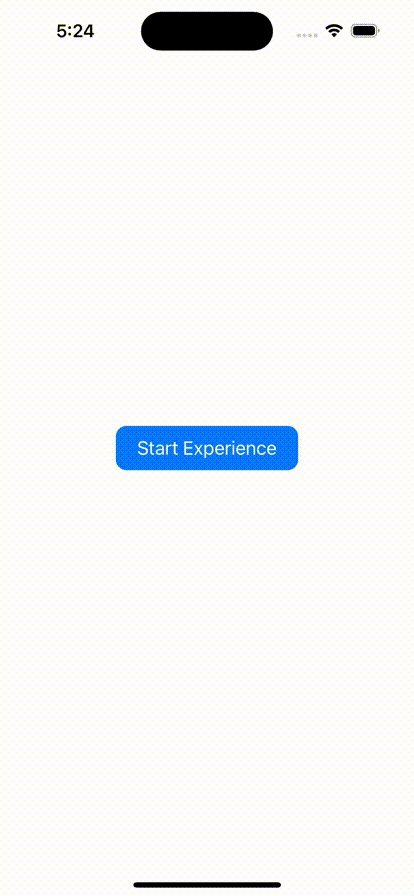
Clean up resources
If you want to clean up and remove a Communication Services subscription, you can delete the resource or resource group.
Deleting the resource group also deletes any other resources associated with it.
Learn more about cleaning up resources.
Feedback
Coming soon: Throughout 2024 we will be phasing out GitHub Issues as the feedback mechanism for content and replacing it with a new feedback system. For more information see: https://aka.ms/ContentUserFeedback.
Submit and view feedback for